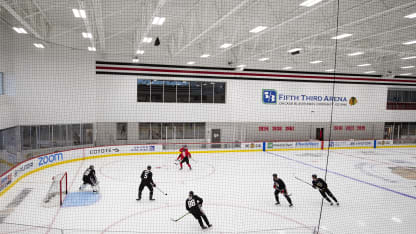The 'bubble' of the hub cities might not officially be enacted until the teams leave on July 26, but there is already a bubble taking shape in each team's home city. Any member of the planned traveling party (players, hockey operations staff, coaches, trainers and equipment staff, etc.) is not permitted to have in-person interactions around the rink with the limited number of people allowed on site that are not in the traveling party (essential building staff, media, etc.). Physical barriers and significant social distancing are also in place between the two groups use to prevent any possible transmission to the players and members of the traveling party.

